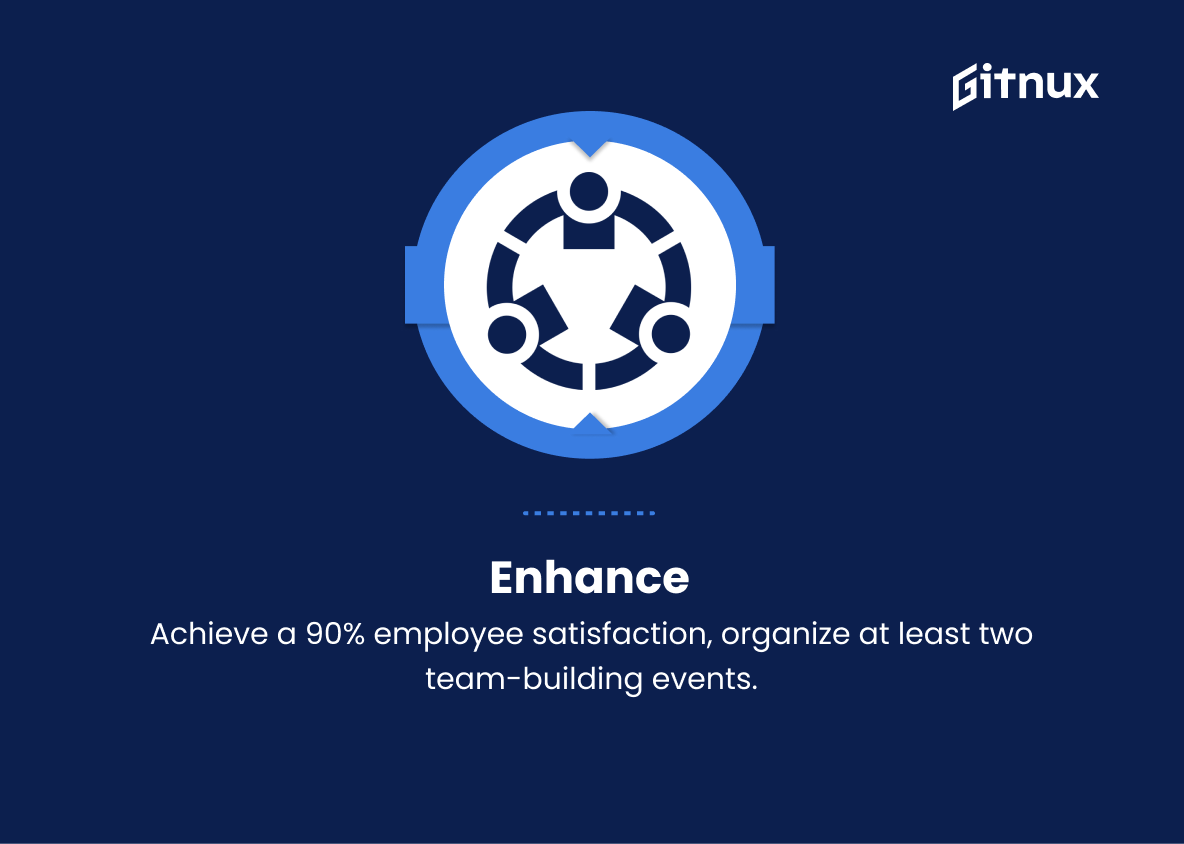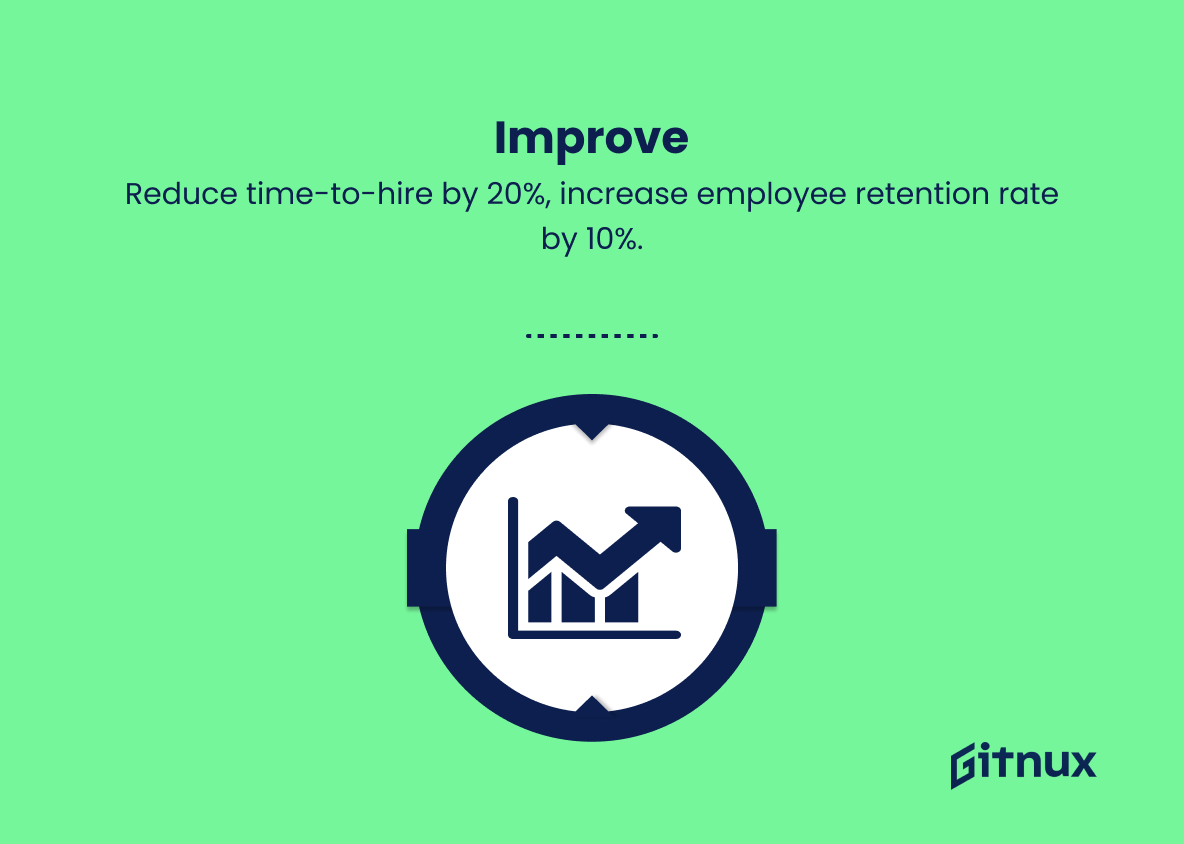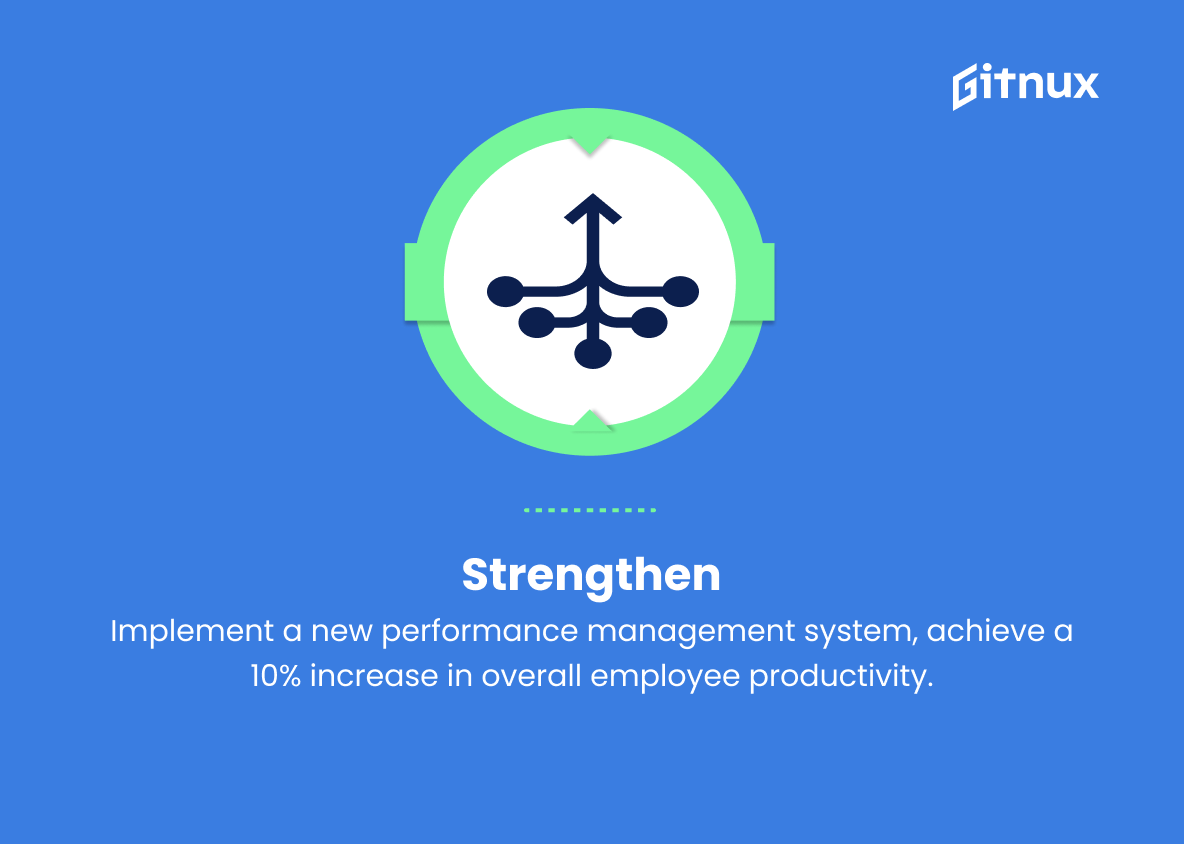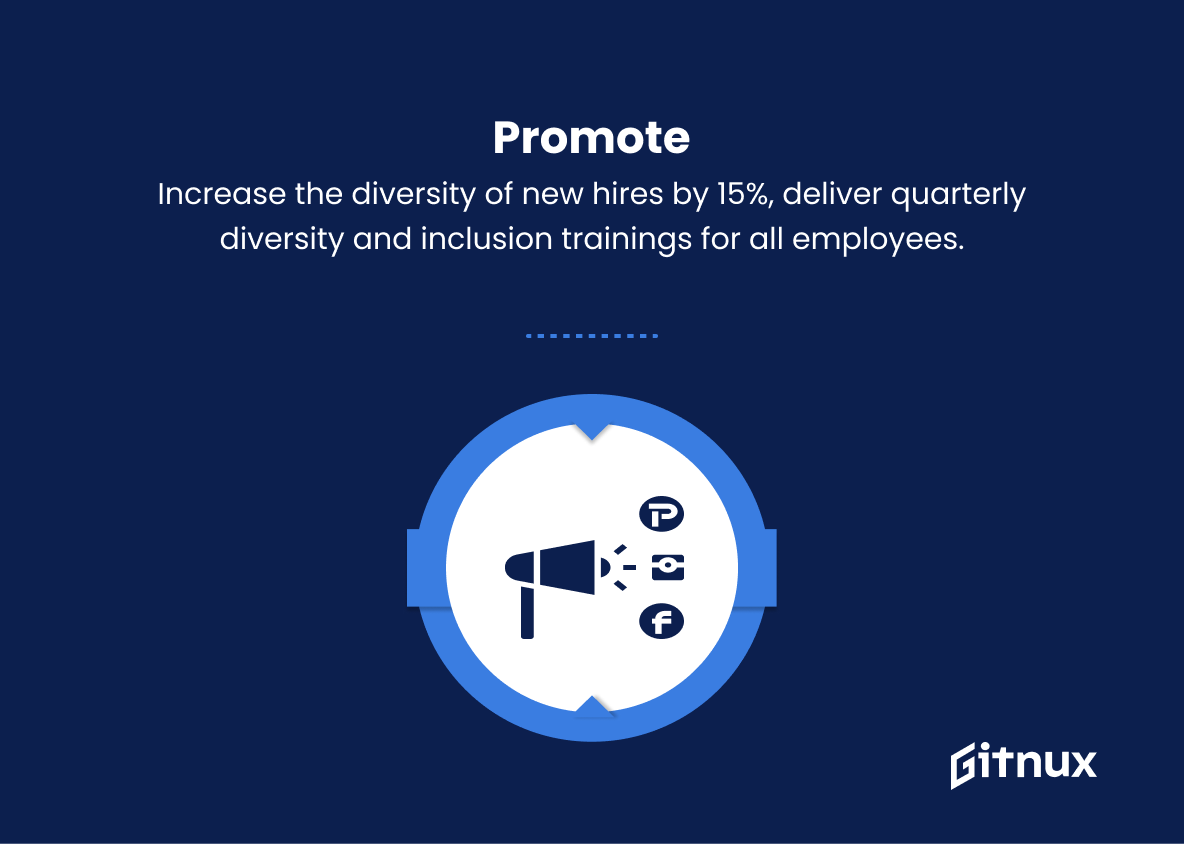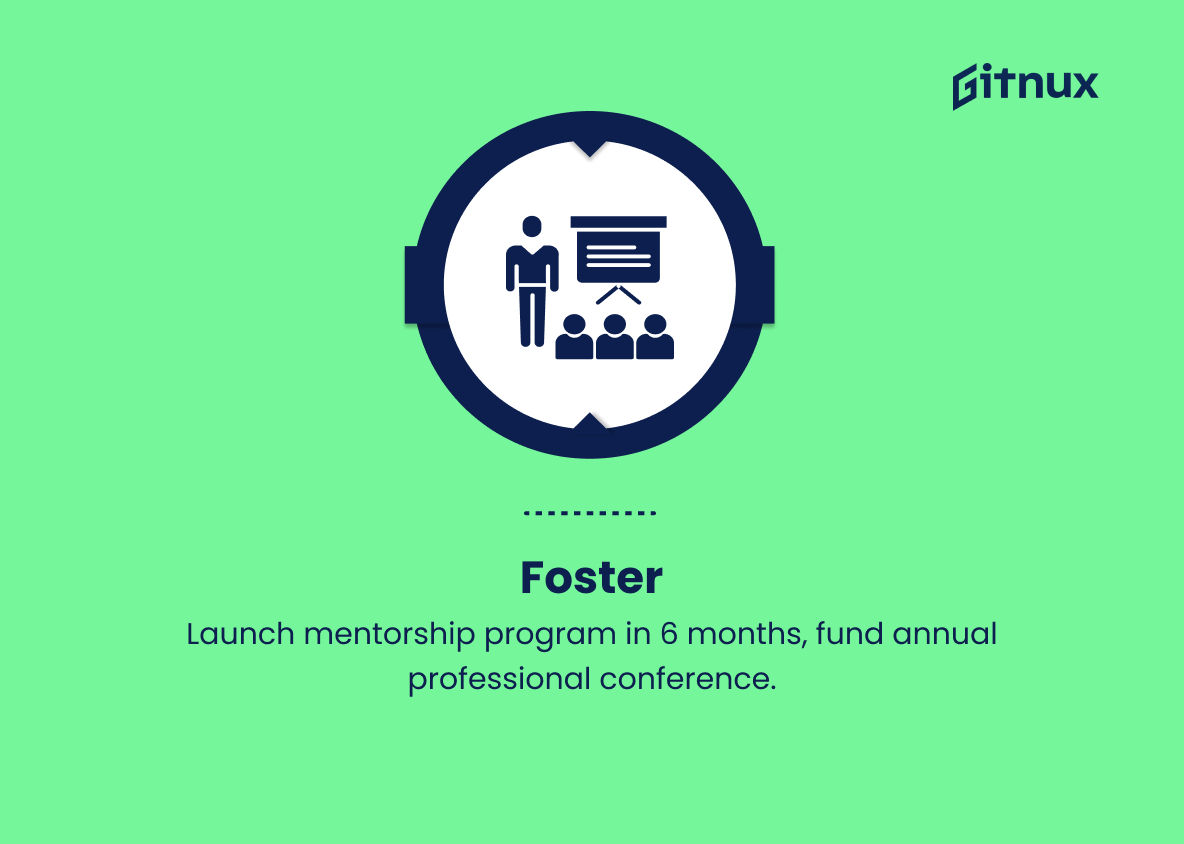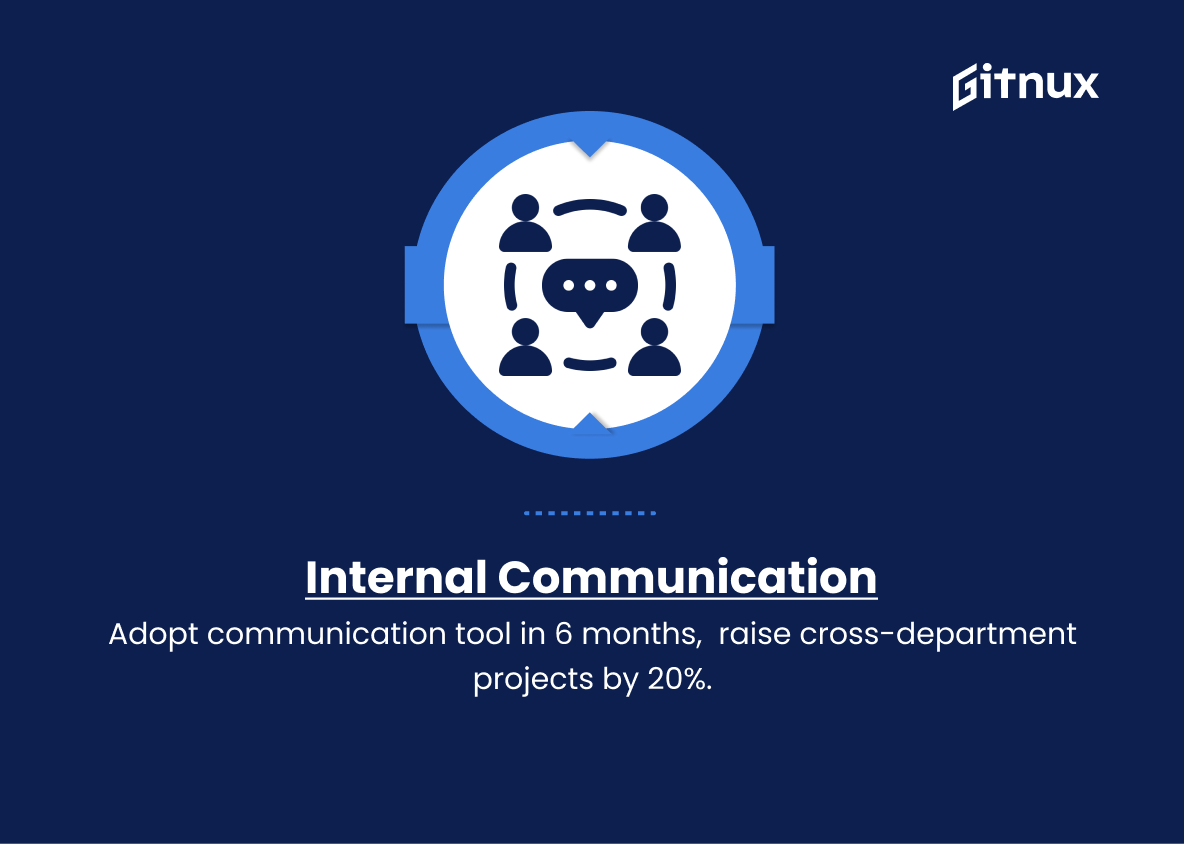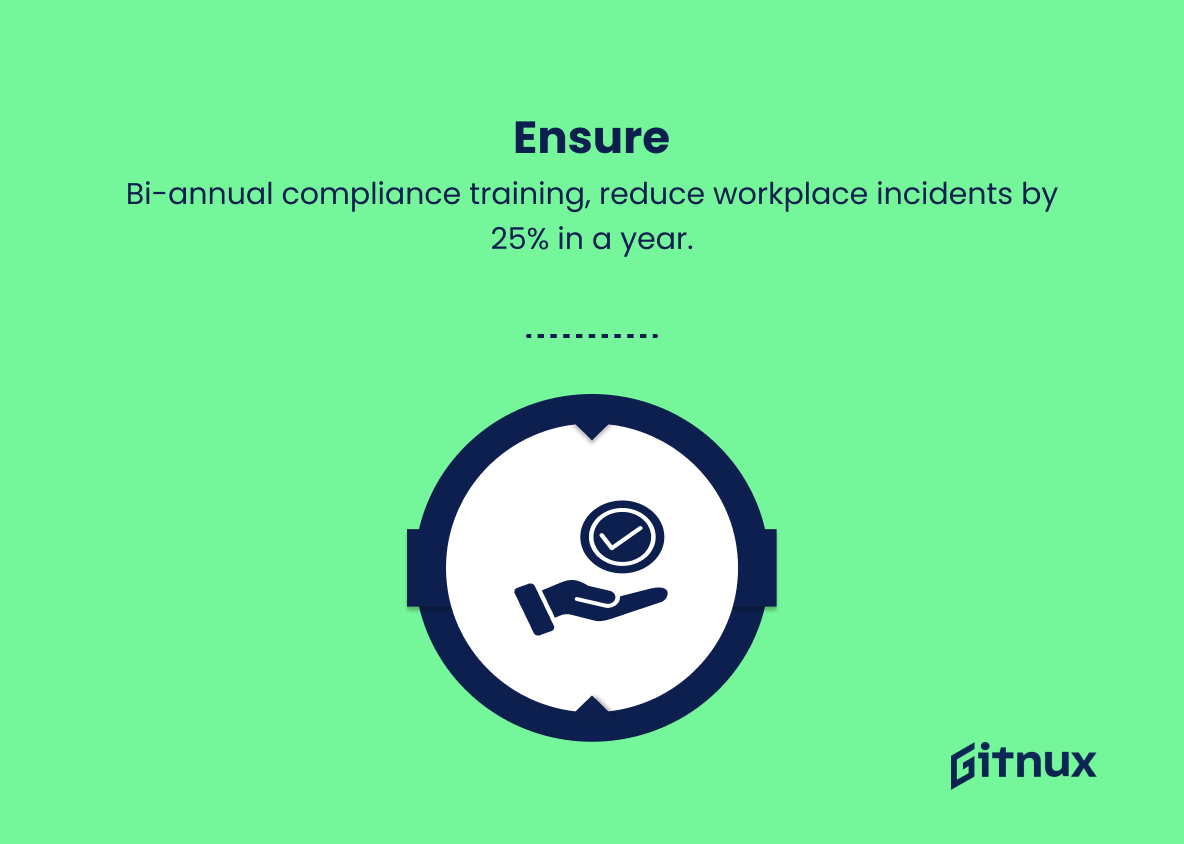In the ever-evolving world of business, setting goals and achieving results are essential for organizational growth, and Human Resources departments are no exception to this rule. HR teams play a pivotal role in cultivating a productive and engaging work environment for employees. With increasing importance placed on HR functions, embracing the concept of Objectives and Key Results (OKRs) is imperative for HR professionals striving to facilitate collaboration, fuel performance, and drive positive change within the workplace.
In this blog post, we will delve into the realm of HR OKRs, shedding light on their significance, benefits, and implementation strategies, ultimately empowering organizations to strive towards excellence in all aspects of employee management and organizational wellbeing.
HR Team OKRs You Should Know
1. Objective: Enhance employee engagement and satisfaction
Key Result 1: Achieve a 90% employee satisfaction score in quarterly surveys
Key Result 2: Organize at least two team-building events per quarter
Explanation: This OKR aims to create a positive and inclusive work environment, by measuring employee satisfaction and taking action to improve it through regular team events.
2. Objective: Improve talent acquisition and retention
Key Result 1: Reduce time-to-hire by 20%
Key Result 2: Increase employee retention rate by 10% over the next year
Explanation: This OKR focuses on reducing the time to hire new employees and increasing employee retention rates, ensuring the company attracts and keeps valuable talent.
3. Objective: Strengthen employee performance and productivity
Key Result 1: Implement a new performance management system in the next six months
Key Result 2: Achieve a 10% increase in overall employee productivity in the next year
Explanation: This OKR aims to enhance employee performance and productivity levels through the introduction of a new performance management system.
4. Objective: Promote diversity, equity, and inclusion in the workplace
Key Result 1: Increase the diversity of new hires by 15% in the next year
Key Result 2: Deliver quarterly diversity and inclusion trainings for all employees
Explanation: This OKR is focused on increasing workplace diversity and fostering an inclusive environment through targeted hiring and regular training sessions.
5. Objective: Foster employee growth and development
Key Result 1: Implement a company-wide mentorship program within six months
Key Result 2: Allocate resources for employees to attend at least one professional development conference per year
Explanation: This OKR aims to support employees in their personal and professional growth through a mentorship program and opportunities for professional development.
6. Objective: Streamline HR processes and reduce operational costs
Key Result 1: Automate at least three manual HR processes in the next year
Key Result 2: Decrease HR operational costs by 10% in the next year
Explanation: This OKR focuses on improving efficiency and cost-effectiveness in the HR department by automating manual processes and reducing overall operational costs.
7. Objective: Enhance internal communication and collaboration
Key Result 1: Implement a new internal communication tool within six months
Key Result 2: Increase the number of cross-departmental projects by 20% over the next year
Explanation: This OKR aims to improve communication and collaboration within the company by introducing new communication tools and fostering cross-departmental collaboration.
8. Objective: Ensure regulatory compliance and reduce workplace risks
Key Result 1: Conduct bi-annual compliance training for all employees
Key Result 2: Reduce the number of workplace incidents by 25% in the next year
Explanation: This OKR concentrates on maintaining compliance with employment laws and regulations, and reducing workplace risks through ongoing training and proactive measures.
HR Team OKRs Explained
These HR Team OKRs are crucial because they encompass key aspects that contribute to overall organizational success. By enhancing employee engagement and satisfaction, the company is likely to see higher levels of motivation and commitment from its workforce. Improving talent acquisition and retention ensures that the organization has a strong pool of employees that help maintain a competitive advantage in today’s fast-paced market.
Strengthening employee performance and productivity directly impacts the company’s bottom line, while promoting diversity, equity, and inclusion creates a diverse and dynamic work environment that fosters innovation and collaboration. Focusing on employee growth and development helps in building a robust succession plan, ensuring long-term success. Streamlining HR processes and reducing operational costs allows the company to allocate resources more effectively, improving overall efficiency.
Enhancing internal communication and collaboration leads to better decision-making and problem-solving, while ensuring regulatory compliance and reducing workplace risks protect the organization from legal and financial issues. Together, these OKRs help create a strong foundation for a successful, thriving company.
Conclusion
In summary, HR Team OKRs are vital to ensuring the overall success and growth of an organization. These strategic objectives enable HR professionals to work efficiently and align their goals with the company’s broader mission.
Implementing and regularly reviewing these OKRs ensures that the HR team continuously improves its processes, fosters a positive work culture, and drives employee engagement. Ultimately, by embracing and utilizing OKRs, organizations can elevate their HR teams to new heights, streamlining HR functions, and promoting a thriving work environment for all employees.
